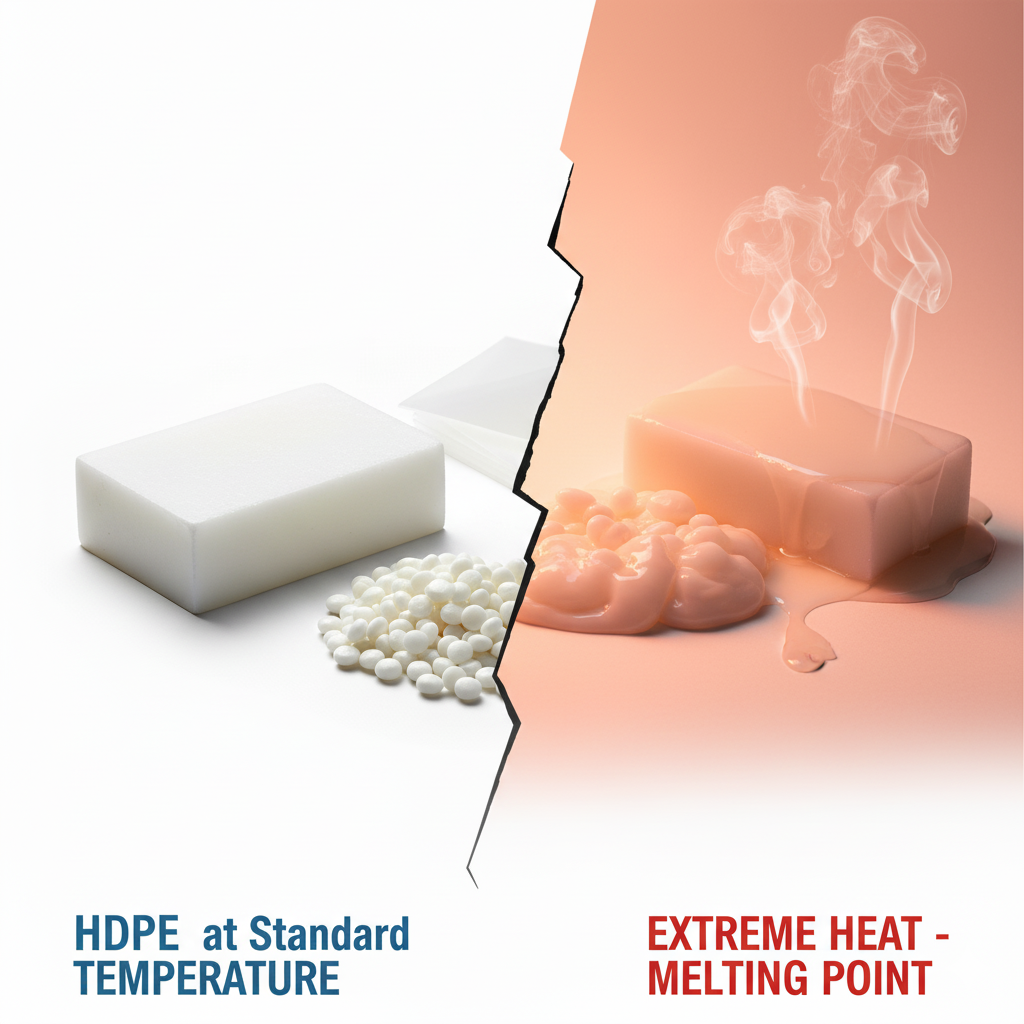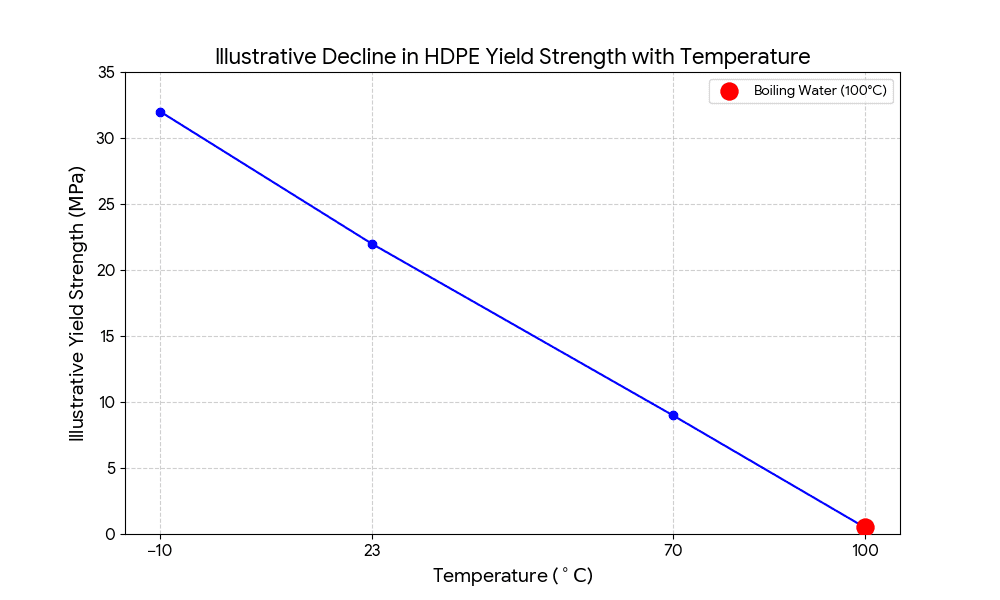High-Density Polyethylene (HDPE) is one of the most popular plastics used in bottles, containers, and reusable products due to its strength, durability, and chemical resistance. However, when it comes to exposure to boiling water for extended periods, HDPE isn’t the right material to rely on. Many people assume that since HDPE can handle heat to a certain point, it must be safe for boiling liquids—but that’s not entirely true.
This article explains why HDPE should not be used with boiling water for hours, the science behind its heat tolerance, and safer alternatives for high-temperature applications.
What Is HDPE and Why It’s So Common
HDPE stands for High-Density Polyethylene, a thermoplastic polymer made from petroleum. It’s known for being:
- Lightweight yet tough
- Resistant to impact and chemicals
- Non-reactive to most household substances
- Recyclable (resin code #2)
These qualities make HDPE perfect for items like:
- Milk jugs and juice bottles
- Ice packs and cold storage containers
- Piping and chemical drums
- Food storage boxes (for cool or room-temperature use)

HDPE and Heat Resistance: The Facts
HDPE has a melting point of around 120–130°C (248–266°F).
While this seems high, its softening point is much lower—around 80–90°C (176–194°F).
This means that if HDPE is exposed to boiling water (100°C / 212°F) for a long time, it can begin to:
- Warp or deform due to thermal stress
- Soften or lose structural integrity
- Leach trace chemicals into the liquid (especially if recycled or lower-grade HDPE is used)
Even if the plastic doesn’t visibly melt, its molecular structure weakens under prolonged heat exposure, leading to gradual breakdown.

What Happens When You Use HDPE with Boiling Water for Hours
Here’s what can occur when HDPE containers are subjected to boiling water over extended periods:
- Deformation: The container may lose its shape, especially at stress points or thinner areas.
- Leakage: Seals and joints may weaken, allowing water or air to escape.
- Chemical Leaching: Under sustained heat, trace additives used in HDPE manufacturing can migrate into the liquid.
- Reduced Lifespan: Repeated heating cycles drastically shorten the durability of HDPE products.
- Potential Safety Concerns: Even food-grade HDPE is not certified for continuous exposure to boiling temperatures.

Short-Term vs. Long-Term Use
- Short-term contact (a few minutes) with hot water is generally safe—for example, washing HDPE bottles or rinsing them with warm water.
- Long-term exposure (hours on end) to boiling water causes structural and chemical degradation.
So, if you’re planning to store or heat boiling water for hours, HDPE is not a safe or reliable choice.
Better Alternatives for High Heat
If you need containers or pipes that can handle boiling or near-boiling temperatures safely, consider these materials:
Material | Temperature Resistance | Best For |
Polypropylene (PP) | Up to 120°C (248°F) | Hot liquids and food storage |
Stainless Steel | 100–500°C (212–932°F) | Boiling water, cooking, industrial use |
Borosilicate Glass | Up to 400°C (752°F) | Laboratory and kitchen applications |
Silicone | Up to 250°C (482°F) | Flexible containers, baby products |
These materials maintain stability and do not release harmful chemicals even when exposed to high heat for long durations.
Environmental and Safety Considerations
Even though HDPE is recyclable and eco-friendly compared to many plastics, exposing it to excessive heat can produce microplastics or degrade it into non-recyclable waste. Repeatedly heating and cooling HDPE reduces its recyclability and environmental value.
By avoiding the use of HDPE for boiling water, you not only protect your health but also reduce environmental pollution caused by degraded plastic waste.
Final Verdict: Avoid Long Heat Exposure
To sum it up:
✅ HDPE is strong, lightweight, and perfect for cold or room-temperature applications.
❌ But it’s not designed to handle boiling water for hours.
Prolonged heat exposure can lead to deformation, leaching, and potential health concerns. If your goal involves boiling, steaming, or long-term heat contact, switch to safer materials like stainless steel, glass, or silicone.